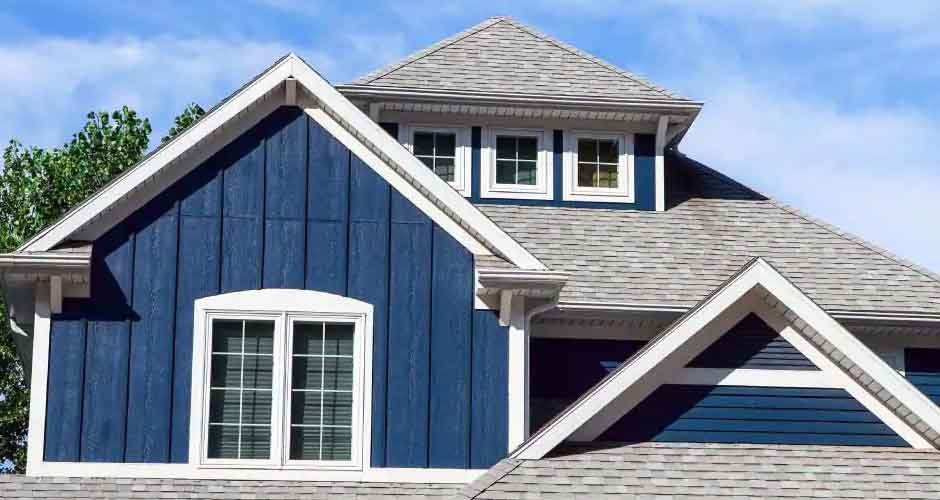The roof is one of the most critical components of your home, protecting it from the elements and providing structural integrity. A well-maintained roof ensures the safety and comfort of your family and belongings. Regular roof checks are paramount to identify potential issues early on and, according to Blue Door Realty Management, will prevent costly repairs or replacements. We will explore how you can tell if your roof is in good shape through a thorough roof check, helping you ensure the longevity and effectiveness of your roof.
Steps to do the roof check
1. Exterior Inspection:
Start your roof check by examining the exterior of your roof from the ground level. Look for any obvious signs of damage, such as missing or broken shingles, cracked tiles, or damaged flashing. Check for signs of wear and tear, discoloration, or algae growth, which can indicate issues with moisture and ventilation. Binoculars can help you inspect the roof more closely from a safe distance.
2. Roof Age:
Knowing the age of your roof is essential in assessing its condition. Most roofs have a lifespan of 20 to 25 years, depending on the materials used. If your roof is approaching or past its expected lifespan, consider a roof replacement or major repairs, even if there are no visible issues yet.
3. Check for Leaks:
Inspect your attic for signs of water leaks. Look for water stains on the ceiling, damp spots on the walls or insulation, or mold and mildew growth. If you notice any of these signs, it indicates that your roof is not effectively repelling water, and there may be underlying leaks that need immediate attention.
4. Flashing and Seals:
Examine the flashing and seals around chimneys, vents, skylights, and other roof penetrations. These areas are common entry points for water and moisture. Check for cracked or damaged flashing and seals and ensure they are securely in place. Damaged flashing and seals can lead to leaks and water damage.
5. Sagging Roof:
From the ground level, scrutinize for any visible signs of sagging or dipping in the roof’s structure. A sagging roof is a significant concern as it can indicate structural issues and compromised support. If you notice any sagging, it is paramount to have an experienced roofer assess the situation promptly.
6. Shingle Condition:
Inspect the condition of your roof’s shingles or other roofing materials. Look for signs of curling, buckling, or missing shingles. Damaged or missing shingles can expose the underlying layers of the roof to water damage and deterioration. Replacing damaged shingles promptly helps maintain the integrity of the roof.
7. Moss and Algae:
Moss and algae growth on the roof can trap moisture and cause damage to the roofing material. Removing moss and algae regularly is essential to stem further deterioration and potential leaks. Use a gentle cleaning solution or consult a professional roof cleaner to remove moss and algae safely.
8. Granule Loss:
Check your gutters and downspouts for granules from the shingles. Granule loss is a sign of shingle wear and indicates that the roof may need replacement soon. Excessive granule loss can affect the shingles’ ability to protect the roof from UV rays and weather elements.
9. Gutter and Downspout Inspection:
Clean your gutters and downspouts regularly to prevent clogs leading to water backup and damage. During cleaning, check for granules, shingle debris, and other signs of roof wear. Ensure that the gutters and downspouts are securely attached to the roof and functioning properly.
10. Roof Ventilation:
Proper roof ventilation is paramount for preserving a healthy roof. Adequate ventilation helps regulate indoor temperatures, decreases moisture buildup, and prevents mold growth. Inspect for blocked or damaged roof vents and ensure they are free from debris and obstruction.
11. Attic Ventilation:
Assess the ventilation in your attic space. Proper attic ventilation helps stem heat and moisture buildup, which can usher roof damage and insulation damage. Ensure that your attic vents are unblocked and that air can circulate freely.
12. Chimney and Brickwork:
Inspect your chimney and its brickwork for signs of damage or deterioration. Look for cracks, loose bricks, or damaged mortar joints. Properly sealed chimneys stem water intrusion and structural issues. If you notice any chimney issues, consult a professional roofer or chimney expert for necessary repairs.
Regular roof checks are crucial to ensure that your roof is in good shape and performing its vital functions effectively. Exterior and interior inspections, checking for leaks, assessing flashing and seals, and inspecting shingle condition are all essential aspects of a comprehensive roof check. Additionally, addressing issues with ventilation, gutters, chimneys, and attic spaces contributes to your roof’s overall health and longevity. By being proactive in roof maintenance and hiring a professional roofer for thorough inspections, you can protect your home and investment, ensuring that your roof remains in good shape for years. For more information on professional roof inspections and services, visit all County Roofing websites.


